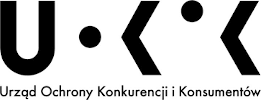UOKiK releases report on pay TV in Poland
Friday, October 7th, 2011
How many pay TV operators are there in Poland and what is the competition between them? What is more popular – a satellite dish or cable? How many Polish-language or HD channels are there? The answers to these and other questions brings the latest report of UOKiK
WARSAW — At the end of the 80s the first cable television networks began to appear, and in 1990 was established the first non-public television station, operating in Wrocław. During this time, the market underwent many changes and at present more viewers use pay TV services than free terrestrial TV. The current situation was carefully reviewed by the Office of Competition and Consumer Protection (Urząd Ochrony Konkurencji i Konsumentów – UOKiK). The analysis of the Office covered over 185 undertakings, both at the nationwide level and local markets (31 cities was examined). The collected data relate primarily to years 2007-2009. The report also used exterior materials, including those of the Polish Chamber of Electronic Communication, the National Broadcasting Council and the Office of Electronic Communications.
Services of pay TV are provided by satellite digital platforms, cable operators and IPTV. The largest number of subscribers (over 6 million) belongs to the operators of digital satellite platforms – i.e. about 60 percent of pay TV users. A dynamic growth in the number of people using these services can be seen. In 2009, their number amounted to nearly 2.7 million more than two years before. In Poland there are four service providers of satellite pay TV. These are: Canal+ Cyfrowy (Cyfra+ platform operator), Cyfrowy Polsat, ITI Neovison (the owner of Telewizja N and Telewizja na kartę) and Telekomunikacja Polska. Currently, the largest digital satellite platform in Poland is Cyfrowy Polsat, which precedes Cyfra+.
Cable television has slightly fewer subscribers. Their services are used by approximately 4.6 million people, and the Polish market is the third largest in Europe. There are over 600 operators, but according to the Polish Chamber of Electronic Communication over 60 percent of the market belongs to one of the four largest operators.
Cable networks registered a much smaller increase in the number of subscribers than satellite platforms primarily due to the high costs of building the network necessary to receive cable television. This limits the activity of cable networks mainly to urban areas and multi-family housing. Markets of large cities are already heavily penetrated, which cannot yet be said about the villages and small towns, where the digital platforms expand. In addition, one of the problems of development of cable television involves blocking access of operators to certain buildings, mainly by housing cooperatives. Such behaviours were already subject to numerous proceedings conducted by UOKiK.
The least widespread way of receiving pay TV is IPTV. In 2009, four sub-regional cable operators provided this type of service. According to surveyed entities, the reason for low popularity of these services include high costs of building the necessary infrastructure and strong saturation of the market by other means of broadcasting, and issues with program content security.
In 2009, the offer of most pay TV operators included the average of 56 Polish-language channels broadcast in analogue system. In the case of programs broadcast in a digital system there are significant differences between individual operators. Their number varies from several dozen to over 100. The range of channels broadcast in HD is also growing. As the first in Poland, in 2007, this standard was introduced by Television N. Multimedia Poland was a pioneer among the cable networks. Currently, the major market players offer at least some HD programs.
Competition between operators takes place in particular local markets, not nationwide. In many areas competition between digital platforms and cable TV stations is totally ruled out – for example in rural or poorly urbanized areas it is unprofitable to build the infrastructure for cable TV, while in the cities, it happens that the administrators of buildings for aesthetic reasons prohibit the installation of satellite antennas. Also the use of different price lists by the cable networks is applied, depending on the place of service provision.
Conclusions gathered by the Office contributed to issuing of the conditional consent to taking over Aster by UPC Polska. UOKiK research showed that the concentration would result in a significant restriction of competition in Warsaw and Krakow.
Latest News
- Barb to start reporting TV-set viewing of YouTube channels
- SAT FILM selects multi-DRM from CryptoGuard
- Qvest and ARABSAT to launch OTT streaming platform
- ArabyAds & LG Ad Solutions partner with TVekstra in Turkey
- Freeview NZ satellite TV service to move to Koreasat 6
- Comscore expands YouTube CTV measurement internationally
